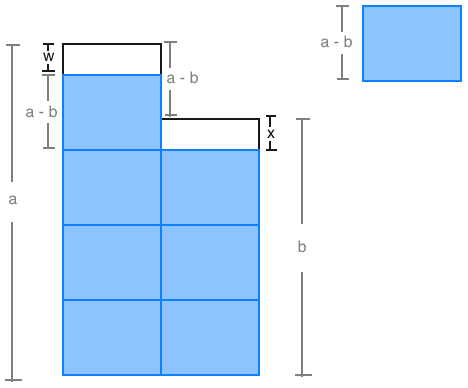Given that a and b are positive integers where a > b , I do think it is always true that
a mod (a - b) = b mod (a - b)
I don't know the best way to explain it, but here is how I convinced myself. In the diagram,
w is the remainder when a is "filled up" with as many blocks of width a-b as possible.
x is the remainder when b is "filled up" with as many blocks of width a-b as possible.
In other words,
w = a mod (a - b)
x = b mod (a - b)
And we can see that...
w + (a - b) = x + (a - b)
w = x
Therefore,
a mod (a - b) = b mod (a - b)

But I do not think it is always true that if a mod x = b mod x then x = a - b
For example, 10 mod 3 = 4 mod 3 but 3 ≠ 10 - 4